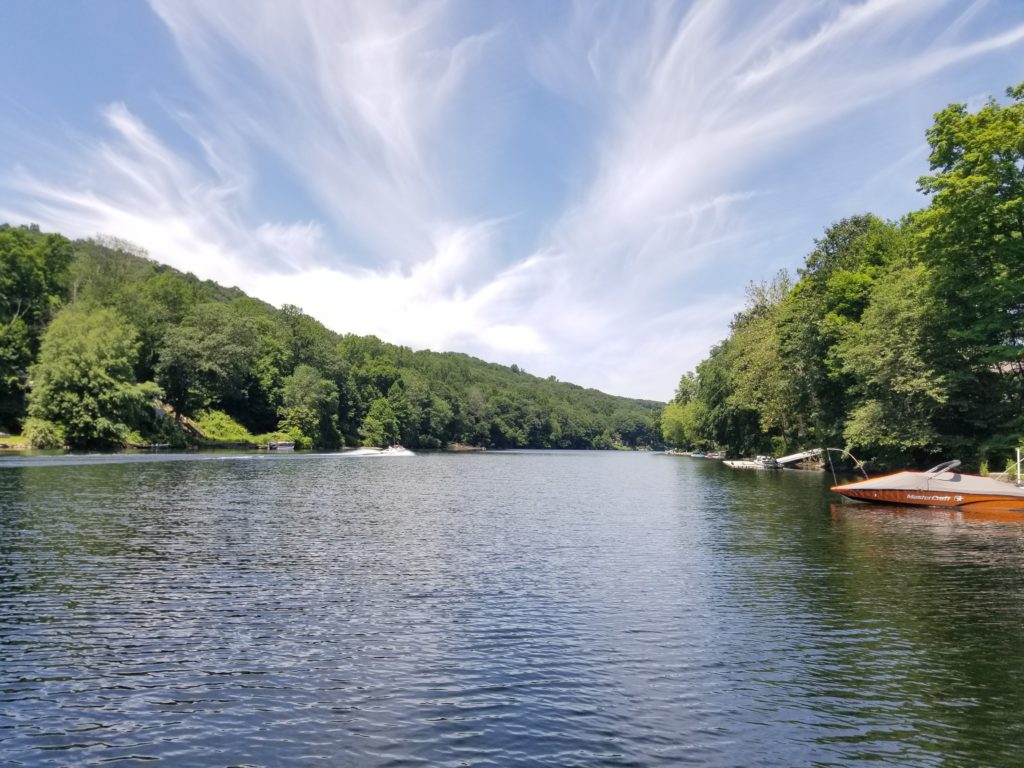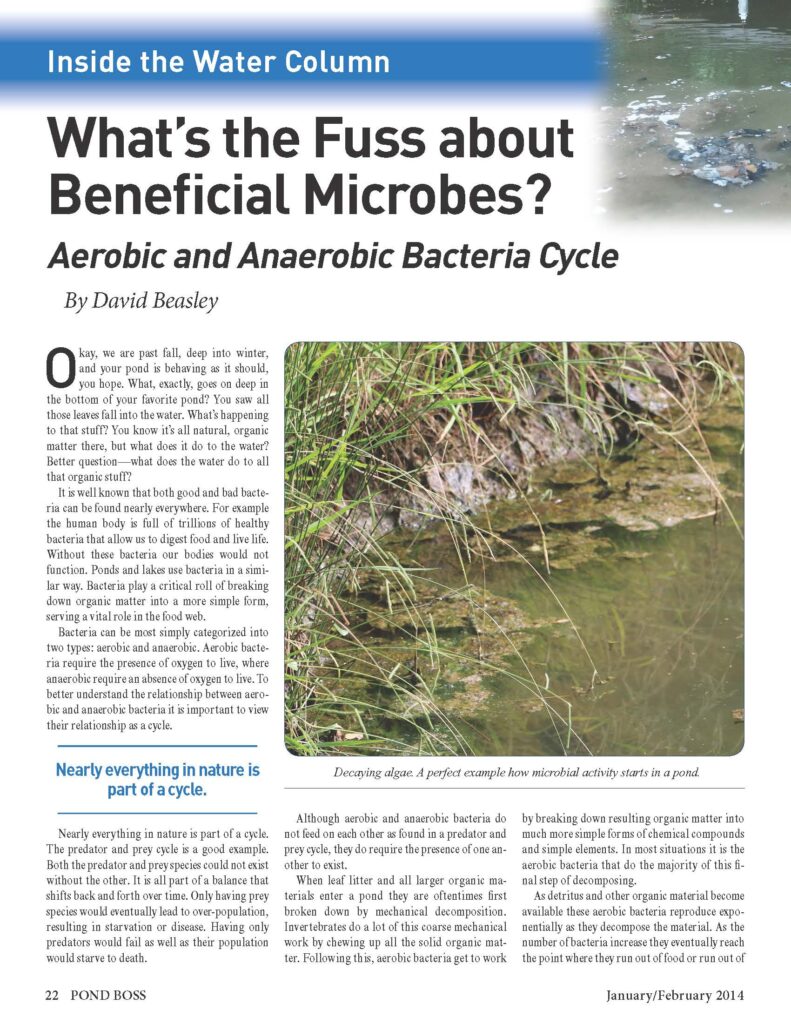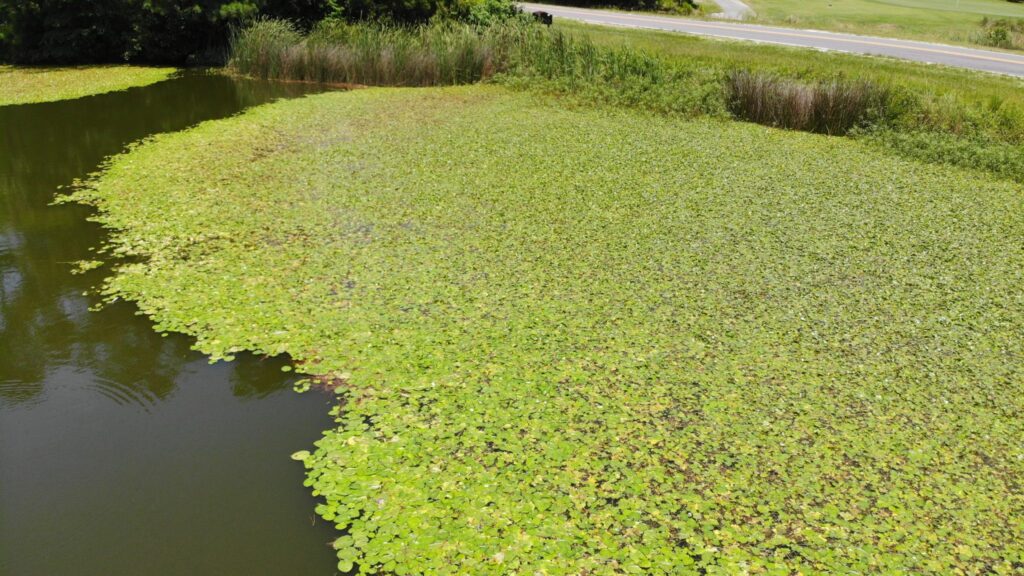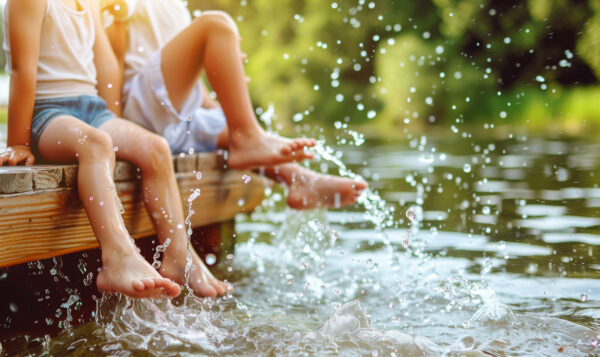

How Organic Matter Breaks Down Beneath the Surface
It is well known that both good and bad bacteria can be found nearly everywhere. For example the human body is full of trillions of healthy bacteria that allow us to digest food and live life. Without these bacteria our bodies would not function. Ponds and lakes use bacteria in a similar way. Bacteria play a critical roll of breaking down organic matter into a more simple form, serving a vital role in the food web. Okay, we are past fall, deep into winter, and your pond is behaving as it should, you hope. What, exactly, goes on deep in the bottom of your favorite pond? You saw all those leaves fall into the water. What’s happening to that stuff? You know it’s all natural, organic matter there, but what does it do to the water? Better question—what does the water do to all that organic stuff?
Bacteria can be most simply categorized into two types: aerobic and anaerobic. Aerobic bacteria require the presence of oxygen to live, where anaerobic require an absence of oxygen to live. To better understand the relationship between aerobic and anaerobic bacteria it is important to view their relationship as a cycle.
How Aerobic and Anaerobic Bacteria Sustain Pond Health
Nearly everything in nature is part of a cycle. The predator and prey cycle is a good example. Both the predator and prey species could not exist without the other. It is all part of a balance that shifts back and forth over time. Only having prey species would eventually lead to over-population, resulting in starvation or disease. Having only predators would fail as well as their population would starve to death.
Although aerobic and anaerobic bacteria do not feed on each other as found in a predator and prey cycle, they do require the presence of one another to exist.
When leaf litter and all larger organic materials enter a pond they are oftentimes first broken down by mechanical decomposition. Invertebrates do a lot of this coarse mechanical work by chewing up all the solid organic matter. Following this, aerobic bacteria get to work by breaking down resulting organic matter into much more simple forms of chemical compounds and simple elements. In most situations it is the aerobic bacteria that do the majority of this final step of decomposing.

Completing the Nutrient Cycle in Ponds
As detritus and other organic material become available these aerobic bacteria reproduce exponentially as they decompose the material. As the number of bacteria increase they eventually reach the point where they run out of food or run out of a food source simply because there is almost always plenty of organic material found at the bottom of ponds. Dissolved oxygen is depleted first on the bottom where most of the bacteria live, on and among the layers of decomposing organic materials.
In addition to self-limiting their own population by naturally exhausting all available dissolved oxygen, aerobic bacteria also release nutrients in dissolved and bound forms when breaking down organics. Which nutrient type (bound or dissolved) is released depends on the type of nutrient and where it is released. When in the bound form these released nutrients are unavailable to be used by plants or algae. What this means is that aerobic bacteria are great at decomposing, but they do a bad job at sustaining their own expanding populations since the aerobes tend to exhaust the resources they require to live. As a result the cycle does not complete itself.
This is where the anaerobic bacteria come into the picture to round out the cycle. Anaerobic bacteria require an environment without oxygen to survive and often become present at the bottom of the pond in areas where the aerobic bacteria have depleted the available dissolved oxygen. Anaerobic bacteria are much slower at decomposing organic matter, but the byproduct of their digestion process is the release of nutrients, especially phosphorus. These nutrients are primarily dissolved and in an available form which are readily available for plants and algae to use as a food source. This process can initiate the production of plant or algae growth which aids in the production of a large percentage of the dissolved oxygen in the pond. When the dissolved oxygen level is restored, the aerobic bacteria can once again replenish their population as they work quickly and with fewer byproducts to break down organic matter.
How Nutrient Load and Bacteria Affect Your Pond’s Health
It is often thought that anaerobic bacteria are bad for your pond since your fish require oxygen and these bacteria live in water that is void of oxygen. The reality of the situation is that anaerobic bacteria are inadvertently helping restore dissolved oxygen levels. When it comes down to it, aerobic bacteria are usually the ones responsible for consuming available dissolved oxygen and forcing your fish to move upward in the water column to escape depleting oxygen levels.
We, as pond owners, see the poor oxygen levels as the issue, but really the poor oxygen is a symptom of the problem. It is often times the high nutrient load that leads to a buildup of organics which lead to the multiplication of aerobic bacteria which then leads to the depletion of too much oxygen.
In stratified ponds and lakes, the spring and fall turnovers are nature’s way of balancing these aerobic and anaerobic conditions, but oftentimes it is not enough to process all the biology in the healthiest way. When aggressively managing a fishery, we push our ponds to be productive with regular feeding, fertilizing as needed, and all the while nudging the ponds toward their carrying capacity on a daily basis. All this aggressive management can lead to too many organics that create too many bacteria who contribute to the loss of dissolved oxygen.
It is important to understand that the true cause of the depleted oxygen levels at certain times of the year is related to the nutrient load and not entirely the fault of the bacteria. Once this is understood, you are on your way to learning how to improve the productivity of your pond without compromising your water quality.









